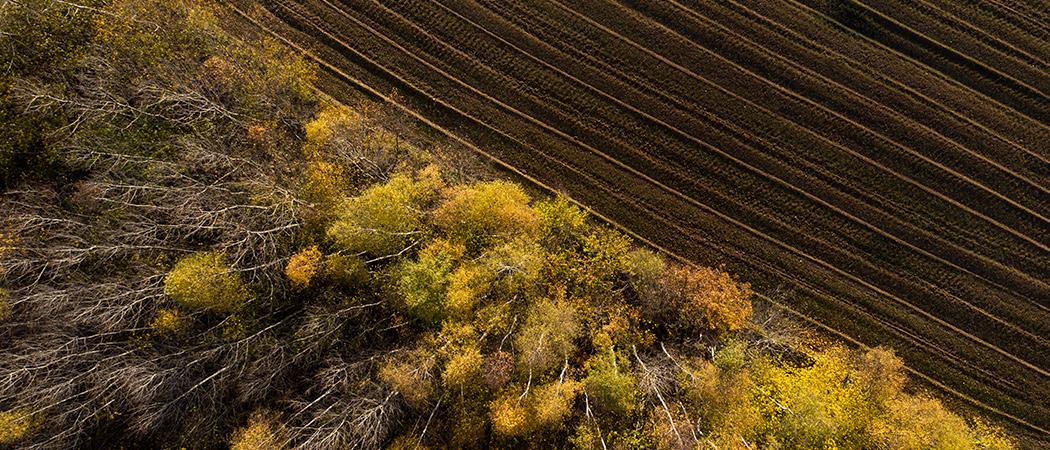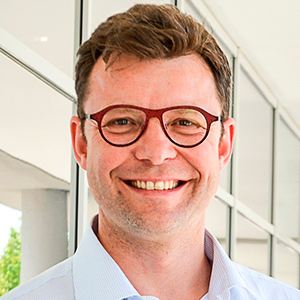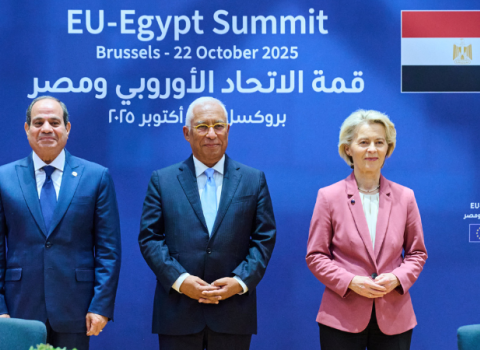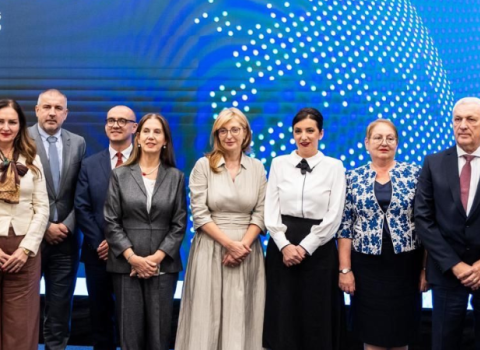There is a clear need to increase food production, but in the face of climate change, emerging diseases, soil erosion, a shortage of agricultural workers and other problems, the knowledge and technologies we have today are clearly insufficient to achieve this

There has never been a more urgent need to develop an integrated vision for agricultural practices, food production and forestry management.
While this has been recognised by national and international organisations across the globe and translated into different strategic approaches, it is clear for us that policy and technology development must be at the heart of the practical implementation of any strategic vision.
Moreover, any of the policy, economic, environmental or social goals we must reach to guarantee a liveable and sustainable future for generations to come, depend on our capacity to develop and deliver adequate technological solutions. There is no credible or feasible compromise between the world as we know it and adequate levels of investment in research and innovation.
This mission is urgent and alignment of priorities at every level is crucial, from EU policy and funding, to regional or even institutional level management and research and innovation agenda-setting.
Take, for example, the Food and Agriculture Organisation (FAO) strategic framework 2022-2031, with its aim of better production, better nutrition, a better environment, and a better life. This is to be achieved by a transition to more efficient, inclusive, resilient and sustainable agri-food systems - which addresses concerns about social inclusiveness and leaves no one behind.
Or the Green Deal, developed as an integral part of the European Commission strategy to simultaneously improve the EU’s economic competitiveness, while at the same time implementing the United Nation’s 2030 Agenda and the sustainable development goals. The Green Deal is the epitome of how complex and grand the challenges of today are. It is perceived as a new growth strategy, with the destination a resource-efficient and competitive economy - where there are no net emissions of greenhouse gases in 2050 and economic growth is decoupled from resource use.
That requires a huge step and a dramatic change to our cultural, economic and political bias, which is achievable only through technologies that are yet to be developed and made available to everyday citizens and industry. This requires a multi-level approach and alignment of priorities, as well as an unprecedented collaborative capacity among the different stakeholders in regional and national R&I ecosystems and value chains.
Putting innovation at the heart of agriculture policy
In our home country, Portugal, a new ‘Innovation Agenda for Agriculture’ being implemented by the government with the support of stakeholders, is aligned with the Green Deal, the FAO strategic framework and the United Nation’s 2030 sustainable development goals. Bearing in mind specific factors confronting the south of Europe and climate change in the Mediterranean area, this national agenda addresses the main challenges on the horizon by giving a central role to knowledge and technology, but oriented to the regional specific conditions.
Let’s take this opportunity to go deeper into what this means. First and foremost, fast progress on the digitalisation of food systems will be crucial to the competitiveness and sustainability of organisations, and for the preparedness of countries to address the main challenges in this field. In common with human health systems, the ability to improve the health (sustainability) of the land, water, agri- and food systems depends on the ability to monitor, diagnose (assess), prescribe (manage) and implement treatment (restoration) protocols.
In the next few years we will need a dramatic increase in food production, will suffer the heavy impact of climate change, emerging and re-emerging diseases, and a shortage of agricultural workers, among others. Given this, the technologies and policies we have today are clearly insufficient.
We will need to work in two main complementary areas: provide new solutions and reinforce the capacity of farmers, technicians and organisations.
In terms of relevant technologies, we emphasise biotechnology, plant and animal breeding, including development of molecular markers associated with physiological traits and new phenotyping tools, and the use of digital technologies to ensure:
- Smart monitoring.
- Intelligent planning and control.
- Transparency, accountability and security.
For example, real-time and remote diagnostics and sensors, developing high throughput phenotyping and improving traceability and biosecurity are areas of core interest.
Other important dimensions that call for high level of competences to translated into end-user friendly applications include irrigation management (crop coefficients, water status indicators and quantification of water stress intensity); diagnosis of plant nutrition status and early detection of diseases; use of digital technologies in livestock farming to improve performance and blockchain-based solutions.
Increasing the capacity for technology adoption of farmers, technicians and organisations will be a critical success factor. Upskilling and reskilling needs to be implemented on a large scale and oriented to the specific requirements of agriculture and food.
Experimental facilities and pilots for the development, testing, and demonstration of different technologies will be crucial for achieving a large-scale adoption of innovative products and practices.
In Portugal, we are developing a network of experimental stations, with local field testing and living labs, in order to reinforce the national capacity for innovation in agriculture and food.
At the same time, we are strengthening the links between research and innovation, experimentation and development of innovative applications, with a focus on addressing specific problems. This is done through innovative organisational approaches that increase proximity and interaction between the research organisations, private companies and other stakeholders.
Competence Centres, for example, the National Center for Technological Innovation Skills in the Agroforestry Sector - InovTechAgro) and Collaborative Laboratories, that is the Smart Farm Collaborative Laboratory) where both INIAV and INESC collaborate are good examples of this effort.
In summary, if we are to address adequately the challenges that are common to us all, such as those identified in the Green Deal and all its ‘sub-strategies’ and policies, as well as challenges that are region-specific, we need to ensure:
1) a multi-level political and institutional alignment and complementarity of policy objectives;
2) clear synergies between funding instruments;
3) understanding of the complexity of the challenge.
It is not possible to realistically address these issues without a much higher investment in R&I, both public and private. But most of all, it needs a co-created, integrated vision of the future policy priorities and R&I efforts - that holds life and the planet itself as the main priority.


Nuno Canada (left) is president of the Portuguese National Institute of Agricultural and Veterinary Research (INIAV)
Ricardo Migueis (right) is head of the EU representation of the Institute for Systems and Computer Engineering, INESC Brussels HUB





 A unique international forum for public research organisations and companies to connect their external engagement with strategic interests around their R&D system.
A unique international forum for public research organisations and companies to connect their external engagement with strategic interests around their R&D system.